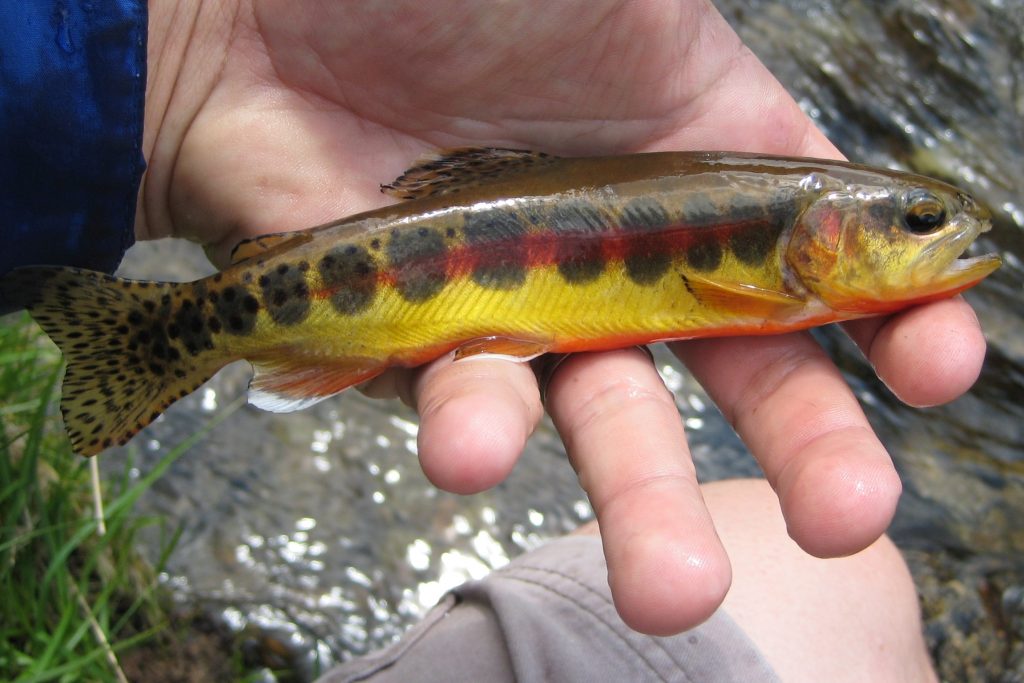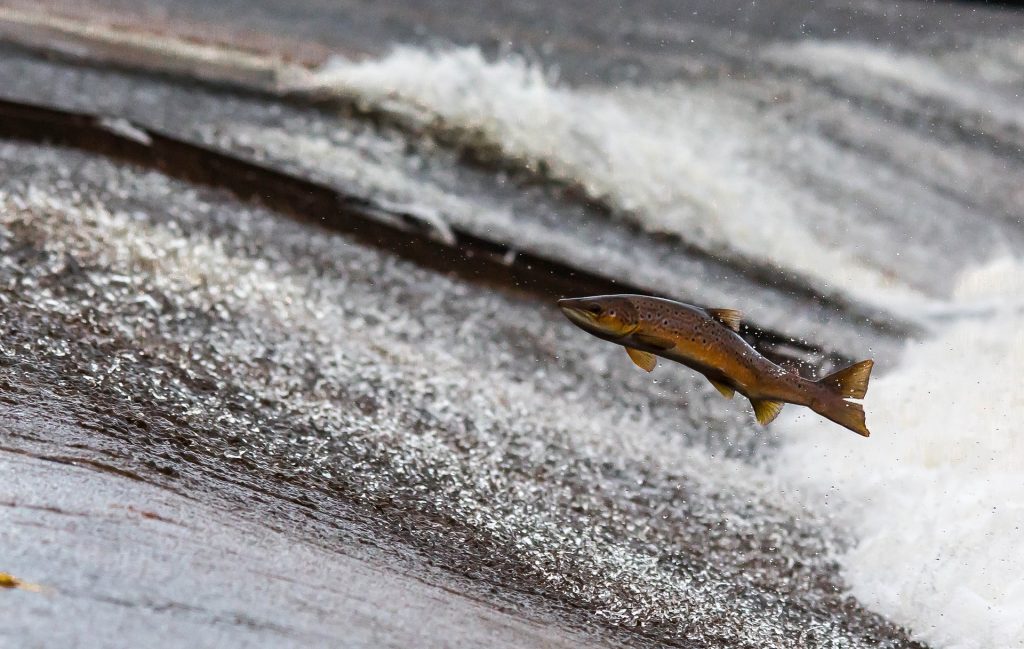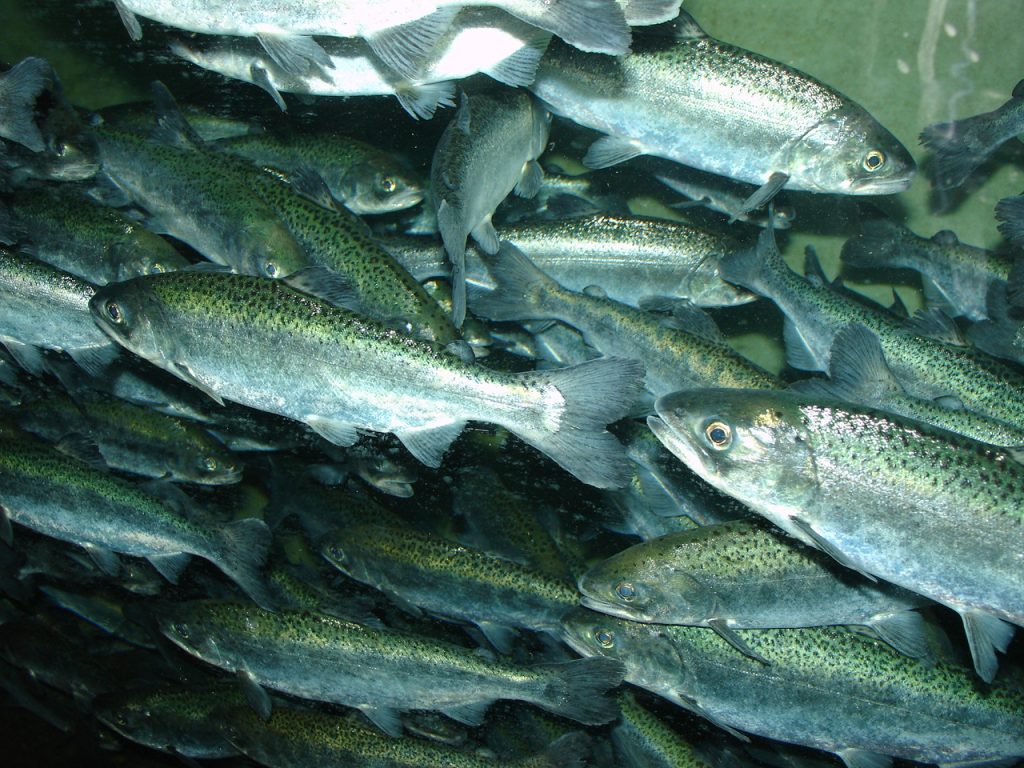Fishing crisis. California at risk of losing half of native trout species
California’s ecosystem could suffer another blow. A Recent report suggests that over the next 50 years, the state is at risk of losing nearly half of its native trout species.
California could face a fishing crisis. A recently released report suggest that over the next 50 years, the state is at risk of losing nearly half of its native trout species and in the next century, 74 per cent of native salmon, steelhead, and trout species are likely to be extinct.
The University of California, Davis, and nonprofit California Trout have released an in-depth study that highlights the perils that the current native trout population is facing and also the measures that should be put in place in order to save and recover the fish populations.
The first threat analysis was released by UC Davis back in 2008 and since then, the number of species at risk of extinction has increased by 180 per cent, from 5 ten years ago, to 14 today. Of California’s remaining salmon, steelhead and trout, 81 per cent are worse off today than in 2008 after five years of ongoing drought. California has already lost one native trout species and experts are calling for urgent action.
“We have already lost one of our native fish,” said Curtis Knight, executive director of CalTrout. “The bull trout was last seen in the McCloud River in 1975. The fact we haven’t lost another since 1975 is remarkable. These fish are resilient, but this report underscores that we must act now to prevent further extinctions.”
The five most endangered species

Among the species that are most threatened by the current conditions, the report identifies five which are most at risk of becoming extinct over the next decades.
The Central California coast coho salmon is first on the list. This species has been deemed to have very poor chances of survival since its habitat was significantly altered in the 19th century and today the population is heavily fragmented. This species is present only in California and since 2007 has been given endangered species status.
The Sacramento River winter-run chinook salmon is second and also faces imminent extinction as it has been reduced to a single small spawning population, which is wholly dependent on artificially-created spawning habitat and cold water releases from Shasta Reservoir.
Southern steelheads are also in peril. It has better chances for survival than the previous two species but not by much. Today they are only found in isolated populations.
The list is completed by the Kern River rainbow trout and McCloud River red band trout.
Swimming in hot water

Climate change is one of the biggest threats to California’s current fish population. The rise in temperature puts habitats at risk reducing the availability of cold water habitat that salmon, steelhead and trout need for survival. The rise in temperature warms up the waters and the historic drought makes habitat scarce.
In general, dry areas are likely to become drier, while wet areas are likely to get wetter. Particularly at higher elevations in California, precipitation is likely to fall as rain rather than snow, reducing overall snowpack and the critical snowmelt that provides cold water year-round to California’s salmonid species.
The report states that climate change is a critical or high threat for 27 of 31 species (87%). It is considered a low threat to only one species, the Coastal Rainbow trout.
Climate change also causes variations in temperature and weather and all will negatively impact most species.
Earlier runoff during the spring is anticipated, causing prolonged periods of low stream flows during summer and early fall. Variability in weather will also increase, causing more frequent, prolonged drought and high-intensity storm events.
The changes will also cause a loss in habitat diversity, a problem that will affect species like the Eagle Lake Rainbow trout, Chinook salmons and summer steelheads, which need thermal water refuge areas which become constricted and less accessible for fish with very limited ranges.
And that’s not all. The alterations in stream flows and the fact that oceans are becoming warmer considerably reduce the chances of survival and growth for juvenile salmon and steelhead in the future. Also, while salmonids will experience a decrease in numbers, invasive species that thrive in the warm water, are likely to increase.
Juvenile salmon and steelhead life cycle also depends on estuaries and lagoons as critical components and as sea levels rise, some of these are expected to be flooded, causing further habitat loss. In parallel, ocean acidification is expected to reduce the California Current, essential for food productivity.
Human impact

Climate change is not the only threat. The human action also puts further pressure on species’ survival chances.
Residential developments, dam construction, logging, urbanisation, recreation and agriculture, all contribute to the shrinking of the fishes’ habitats.
While wildfires have been a common component of the Californian landscape, the recent drought has made them intensify, becoming more severe and catastrophic. These fires pose an imminent threat to small-range species.
The transport infrastructure also has a negative impact as it restricts waterways and further fragments the current populations.
Hatcheries and releases of hatchery-reared salmonids into the wild can negatively impact wild populations through competition, predation, disease, and loss of fitness and genetic diversity. Hatchery influences are especially apparent to for anadromous species where dams blocked access to spawning habitat and hatcheries were established as mitigation. Inland trout can also be impacted with stocking of hatchery fish for recreation.
Predation, competition and disease are also the risks that slamonids have to face due to an increase of invasive species.
Turning the tide

The report is asking for action in three main areas in order to reverse the trend toward extinction.
First of all, environmentalists are advocating for the protection of the most productive river habitats in California, such as the Smith and Eel rivers.
Also, special consideration should be given, especially taking the drought into consideration, to stream flows. Efforts should be made to protect stream water, vital for salmonids’ reproduction and there also has to be a comprehensive plan for groundwater management.
In addition, productivity has to be restored in habitats that have already been altered by focusing on opportunities to mimic natural processes within these altered landscapes.
Species could be provided with passageways to historic spawning places and authorities should also be concerned about ensuring the genetic diversity of the species.
“We know we are not going to turn back the clock to a time before rivers were dammed or otherwise altered for human benefit,” Knight said. “Using the best available science, we can make landscape-level changes that will allow both people and fish to thrive in California.”